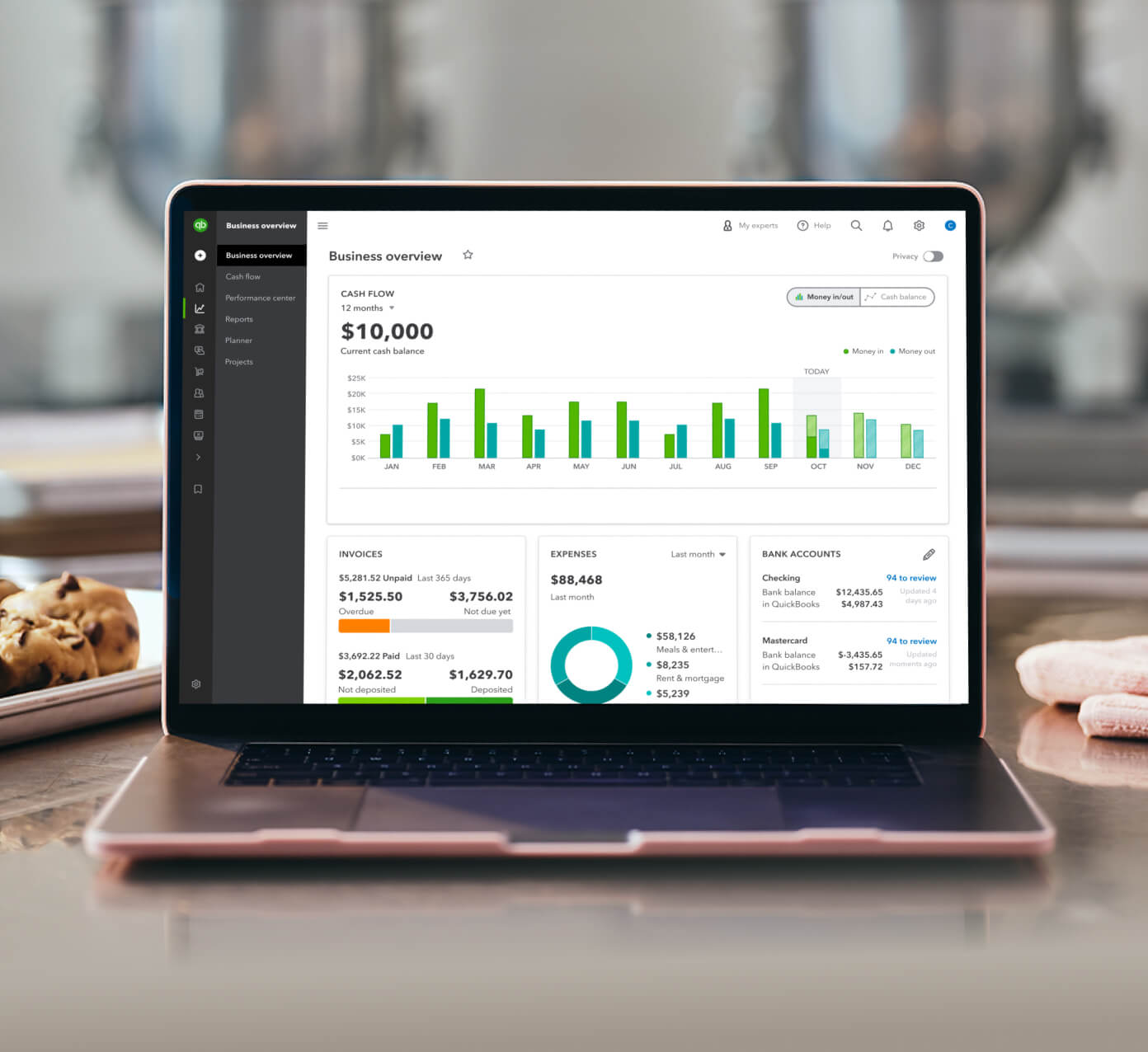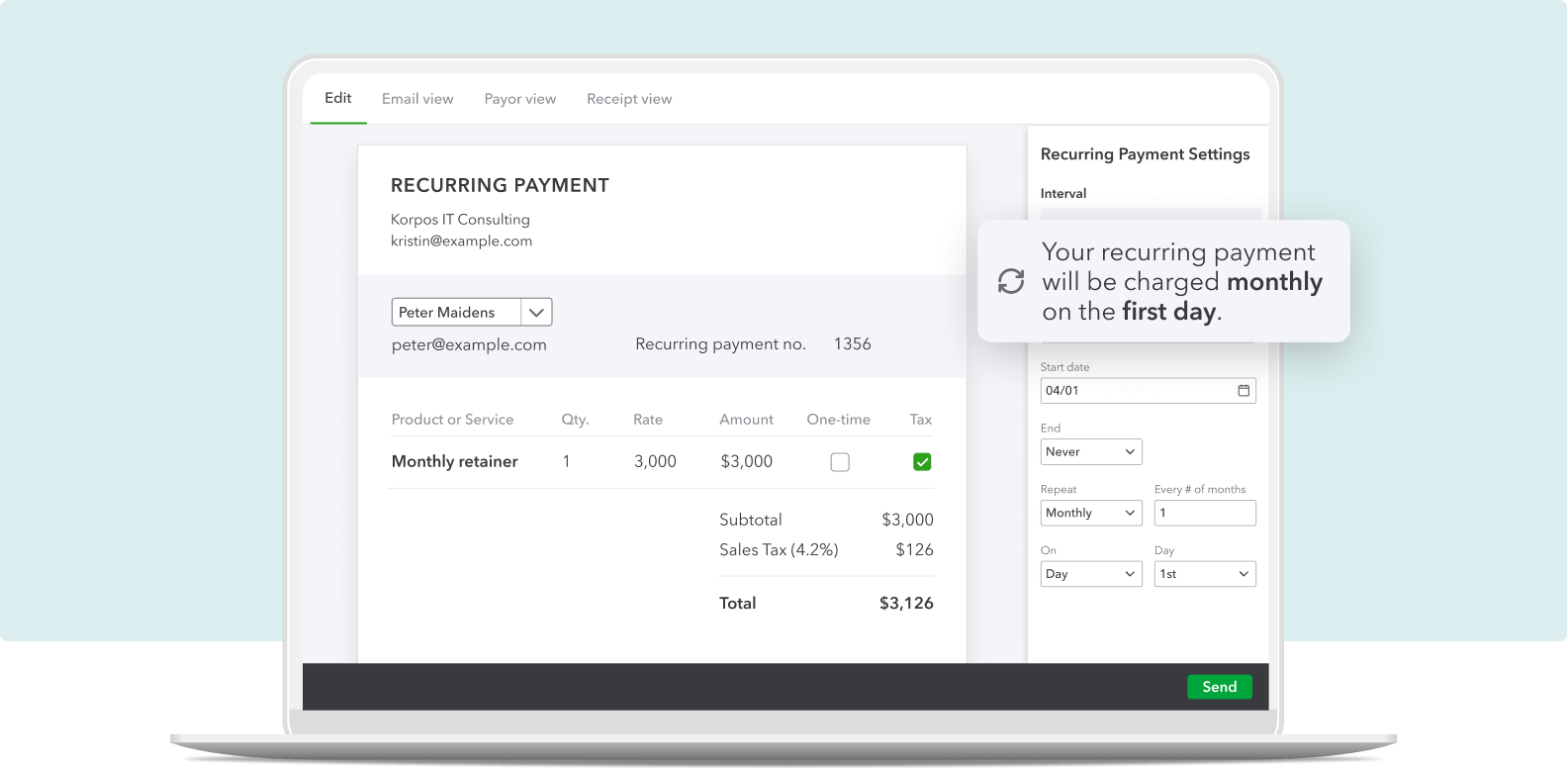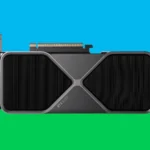Running a restaurant means managing both food and finances. Good accounting software can help you track expenses, manage payroll, and see how much money your business makes. This software saves you time, allowing you to focus on serving great food instead of worrying about numbers. The best accounting software for restaurants helps you make better business decisions while saving time and reducing mistakes.
When choosing software for your restaurant, look for features that meet the specific needs of food service businesses, such as inventory management, recipe costing, and tip reporting. Popular options include Restaurant365, QuickBooks, and MarginEdge. Each has different features and price points. In 2025, running a restaurant means handling many tasks, like inventory, payroll, vendor management, daily sales, and taxes.
This is where accounting software designed for restaurants can help. Whether you have a small café or a multi-location chain, the right accounting software can save time, cut down on errors, and improve your cash flow. Here are the top restaurant accounting software options for 2025, including their pros, cons, and what makes each one special.
1. QuickBooks Online + QuickBooks for Restaurants

Best for: Most restaurants, especially small to mid-sized
✅ Pros:
- Industry-specific chart of accounts
- Integration with POS systems (Square, Toast, etc.)
- Real-time financial reporting
- Cloud-based with mobile access
❌ Cons:
- Add-ons can get expensive
- Limited inventory tracking without third-party apps
QuickBooks is still a favorite in 2025 for its flexibility, ease of use, and massive ecosystem of integrations. The restaurant-specific templates help streamline bookkeeping, while features like tip tracking and daily sales summaries make life easier for restaurant managers.
2. Xero
Best for: Restaurants needing strong multi-location support and global accessibility
✅ Pros:
- Clean interface with great reporting tools
- Easy integration with POS and inventory systems
- Unlimited users at no extra cost
❌ Cons:
- Slight learning curve for beginners
- Some restaurant-specific reports require customization
Xero is gaining popularity in 2025 thanks to its beautiful design and strong multi-location support. It’s ideal for growing restaurant groups and includes strong payroll and inventory add-ons.
3. Restaurant365
Best for: Larger restaurant groups and chains
✅ Pros:
- Built specifically for the restaurant industry
- Handles accounting, inventory, scheduling, and HR
- Integrates deeply with food vendors and POS systems
❌ Cons:
- Higher learning curve
- Pricing starts high compared to general software
Restaurant365 is an all-in-one powerhouse. It’s designed for restaurants from the ground up, making it perfect for high-volume businesses that need granular cost tracking and robust reporting.
4. TouchBistro + TouchBistro Accounting
Best for: Restaurants already using TouchBistro POS
✅ Pros:
- Seamless POS and accounting integration
- Real-time syncing of sales and expenses
- Tailored for food service businesses
❌ Cons:
- Limited to TouchBistro POS users
- Not as customizable as standalone software
TouchBistro Accounting offers a smooth extension for restaurants already using its POS. The syncing between front and back of house makes managing your books much easier.
5. Sage Intacct
Best for: Restaurants needing enterprise-level features
✅ Pros:
- Powerful financial reporting and dashboards
- Great for multi-entity businesses
- Scalable and audit-friendly
❌ Cons:
- Expensive and complex setup
- Best suited for enterprise or franchised restaurants
Sage Intacct is more than just accounting software—it’s a full-blown ERP system. It’s ideal for restaurant groups looking for advanced forecasting, consolidation, and compliance tools.
6. MarginEdge
Best for: Independent restaurants focused on food cost control
✅ Pros:
- Automatic invoice processing via photo or email
- Detailed plate costing and food cost tracking
- Integrates with QuickBooks, Xero, and POS systems
❌ Cons:
- Doesn’t replace full accounting software
- Limited HR/payroll tools
MarginEdge shines when it comes to controlling food costs. It’s not a full accounting platform on its own, but paired with something like QuickBooks, it’s a powerful tool for operators who want to track expenses closely.
7. Wave Accounting
Best for: Small food trucks, cafés, and startups on a tight budget
✅ Pros:
- Free basic plan
- Easy to use
- Built-in invoicing and receipt scanning
❌ Cons:
- Limited restaurant-specific features
- Paid payroll only available in select countries
Wave is a great entry-level solution for brand-new restaurants. It won’t handle your entire operation, but it’s free and handles the basics well.
What to Look for in Restaurant Accounting Software in 2025
When choosing the right tool, consider:
- POS integration for seamless sales reporting
- Inventory tracking to monitor food costs and waste
- Payroll and tip tracking for accurate employee pay
- Vendor management to streamline orders and expenses
- Real-time dashboards to spot trends and make decisions fast
In 2025, automation and integration are the name of the game. The best restaurant accounting software not only saves time but helps improve profit margins, spot waste, and keep you compliant with tax and labor laws. Whether you’re a solo chef or managing a franchise, there’s a tool on this list to match your style and scale.
QuickBooks Online
QuickBooks Online stands out as a popular choice for restaurant owners looking to manage their finances effectively. This cloud-based software offers specific features tailored for food businesses of all sizes.
Restaurant owners can track multiple locations, including food trucks, all within one system. This makes it easier to see how each part of your business is performing without switching between different programs or spreadsheets.
The platform allows you to track income and expenses for all profit centers, giving you a clear picture of which areas are most profitable. This insight helps with making better business decisions about menu pricing and staffing.
QuickBooks Online Advanced offers even more specialized tools for growing restaurants. The system provides real-time business insights that can help owners spot trends or issues before they become problems.
One helpful feature is automated reminders, which can keep you on top of vendor payments and other financial obligations. This is especially important in the restaurant industry where maintaining good relationships with suppliers is crucial.
The software integrates well with point-of-sale systems commonly used in restaurants. This integration reduces manual data entry and helps prevent costly errors in your financial records.
Daily sales reports are easy to generate, giving managers a quick overview of performance. These reports can be customized to show the information that matters most to your specific restaurant.
Payroll management is another strength of QuickBooks Online. Restaurant staff scheduling and payment can be complex with tips, overtime, and varying shift patterns, but the software helps simplify these processes.
Inventory tracking features help restaurant owners monitor food costs and reduce waste. Knowing exactly what you have on hand can improve ordering efficiency and ultimately increase profits.
Tax time becomes less stressful with QuickBooks, as the software keeps your financial information organized throughout the year. This organization makes it easier to provide your accountant with everything needed for accurate filings.
Xero
Xero stands out as a solid choice for restaurant owners looking for affordable yet feature-rich accounting software. With plans starting at just $20 per month, it offers excellent value for small to medium-sized food establishments.
Restaurant owners appreciate Xero for its user-friendly interface that doesn’t require accounting expertise. The platform makes it easy to handle daily financial tasks like expense tracking, bank reconciliation, and bill payments.
One of Xero’s strengths is its collaboration features. Restaurant managers can work directly with their accountants or bookkeepers through the platform, streamlining communication about financial matters.
The software includes useful tools specifically designed for cafes, bars, hotels, and restaurants. These features help businesses run more efficiently by automating repetitive accounting tasks.
Xero’s mobile app lets busy restaurant owners check their finances on the go. This proves especially helpful for managers who split their time between multiple locations or need to approve expenses while away from the office.
Setting up bank feeds in Xero reduces manual data entry. Transaction information flows automatically into the system, saving precious time and reducing the risk of errors in financial records.
The platform offers strong reporting capabilities that give restaurant owners clear insights into their business performance. These reports help identify profitable menu items, track inventory costs, and monitor overall financial health.
Xero integrates with many popular restaurant point-of-sale systems. This connection allows sales data to flow directly into the accounting software without manual transfers.
For restaurant owners who struggle with accounting basics, Xero provides helpful tips and guidance to set up systems that work for their specific needs. This educational support helps even accounting novices use the software effectively.
According to recent reviews, Xero ranks as one of the best options for restaurants due to its low price and rich feature set. It particularly suits establishments that need robust accounting tools without a complicated interface.
Restaurant365
Restaurant365 stands out as a top choice for restaurant accounting software. It was built specifically for the food service industry, helping restaurant owners manage their finances better.
The software brings together all the key parts of restaurant management in one place. This makes it easier to track money coming in and going out.
Restaurant365’s accounting software helps improve profit margins without adding more work. It connects with point-of-sale systems so sales data flows directly into your books.
Restaurant owners like that the system handles recipe costing too. This feature helps track food costs and identify which menu items make the most money.
The cloud-based platform means you can check your restaurant’s numbers from anywhere. No need to be stuck in the back office.
Many users find that Restaurant365 simplifies bookkeeping tasks. The software automates many routine accounting jobs that used to take hours to complete.
For multi-location restaurants, the system offers good visibility across all sites. Owners can compare performance between different locations easily.
Restaurant management becomes more streamlined with this software. It handles not just accounting but operations and workforce management too.
The software grows with your business. Whether you run one restaurant or fifty, the system scales to meet your needs.
Restaurant365 also helps with inventory tracking. This feature alone often saves restaurants money by reducing waste and over-ordering.
Many users report spending less time on paperwork after switching to this system. The automated processes free up staff to focus on customers instead of numbers.
MarginEdge
MarginEdge is a restaurant management software that helps restaurant owners track food costs and simplify back-office tasks. It gives you real-time information about your restaurant’s finances.
The platform works by connecting with your Point of Sale (POS) system and gathering invoice data. This integration lets you see your food and labor costs as they happen, not days or weeks later.
One big advantage of MarginEdge is how it handles invoices. You simply take a picture of your invoices, and the system processes them automatically. This cuts down on manual data entry and prevents costly mistakes.
Restaurant owners can view daily insights about their business performance. The software turns complex sales and invoice information into easy-to-understand reports.
For accounting professionals, MarginEdge offers special benefits. The platform helps accountants eliminate tedious data entry and focus more on valuable services for their restaurant clients.
The software combines several types of data – sales, labor, purchasing, and inventory – to create useful reports. This comprehensive approach helps restaurant managers make better decisions.
When it comes to pricing, MarginEdge offers different options based on your restaurant’s needs. Their pricing page shows how they can adapt to various business sizes.
Restaurant owners particularly appreciate how MarginEdge simplifies cost management. Instead of spending hours on spreadsheets, they can quickly see which menu items are most profitable.
The platform also helps with inventory tracking, which reduces food waste and improves ordering accuracy. This feature alone can save restaurants thousands of dollars annually.
For multi-location restaurants, MarginEdge provides unified reporting across all sites. Owners can compare performance between locations and spot trends or problems quickly.
FreshBooks
FreshBooks is a popular accounting software that works well for restaurants of all sizes. This cloud-based solution helps restaurant owners manage their finances without needing accounting expertise.
The platform offers special features for the food service industry. Restaurant owners can easily track expenses, create invoices, and manage payroll all in one place.
Time-saving tools make daily accounting tasks simpler. You can quickly categorize food costs, track inventory expenses, and monitor profit margins to keep your restaurant profitable.
FreshBooks lets restaurant managers accept credit card payments directly through the system. This integration helps keep all financial information in one place.
The software includes helpful collaboration features. Restaurant teams can share files and financial information with employees, contractors, or accountants.
Restaurant owners appreciate the mobile app that lets them check finances on the go. Managers can send invoices, track expenses, or check daily sales from anywhere.
The user interface is clean and easy to navigate. Even restaurant owners with minimal accounting knowledge find FreshBooks straightforward to use.
Reporting features help restaurant managers make smart business decisions. The software creates visual reports showing sales trends, expense categories, and profit margins.
FreshBooks offers a 30-day free trial for restaurants wanting to test the system. This gives plenty of time to see if it fits your restaurant’s needs.
The software has earned recognition from industry experts. PCMag named it an Editors’ Choice winner for its customizable tools and excellent design.
Monthly pricing plans fit different restaurant sizes. Small cafes can choose basic plans while larger restaurants might need more advanced features.
Restaurant owners particularly like the expense tracking features. The system can automatically categorize food costs, equipment purchases, and operational expenses.
Customer support is responsive and helpful. This matters when restaurant managers need quick answers during busy service times.
Wave Financial
Wave Financial offers free accounting software designed with small business owners in mind, including restaurant operators. This makes it an attractive option for new restaurants or those with tight budgets.
The platform combines accounting, invoicing, and banking capabilities in one place. Restaurant owners can track expenses, monitor cash flow, and manage their books without paying monthly subscription fees.
Setting up Wave is simple, and the interface is user-friendly. Even if you’re not an accounting expert, you can quickly learn to navigate the system and keep your financial records in order.
For restaurants, Wave’s customization options allow you to tailor the software to your specific business needs. You can track food costs, labor expenses, and other restaurant-specific categories.
The invoicing feature helps restaurant owners who offer catering services or need to bill corporate clients. You can create professional invoices and send them directly to customers.
Wave also offers paid add-ons for payroll and payment processing. These features come at an additional cost but integrate seamlessly with the free accounting software.
One limitation is that Wave may not have all the industry-specific features that larger restaurant operations need. As your business grows, you might outgrow its capabilities.
Restaurant owners praise Wave for its ease of use and affordability, especially when they’re just starting out. The software helps them stay organized without adding another monthly expense.
Wave Financial works best for small to medium-sized restaurants that need basic accounting functions without complex reporting requirements. For new restaurant ventures watching their startup costs, it provides a solid foundation for financial management.
Plate IQ
Plate IQ, now powered by Ottimate AI, is a specialized accounting solution for restaurants that focuses on accounts payable automation. The software helps restaurant owners streamline their invoice processing and payment workflows.
The platform can automatically extract data from invoices, eliminating the need for manual data entry. This saves time and reduces errors that often occur with traditional methods.
One standout feature is the ability to track inventory costs over time. Restaurant managers can easily see price changes from suppliers and make better purchasing decisions.
Plate IQ offers virtual and physical debit cards for employees and specific locations. This gives owners more control over spending and simplifies expense tracking.
The system remembers how items are coded and gets smarter over time. This means less work for restaurant staff who can focus on customers instead of paperwork.
For restaurant owners looking to cut down on administrative tasks, Plate IQ ranks among the best accounting software options in 2025. Its focus on automation makes it particularly valuable for busy establishments.
Plate IQ connects with popular accounting systems, making it work well within existing financial setups. This integration helps create a more complete financial picture without jumping between different programs.
The software also helps with bill payments, allowing restaurants to schedule payments and take advantage of early payment discounts when available. This feature can lead to significant savings over time.
According to NerdWallet, Plate IQ is considered one of the top accounting solutions specifically designed for restaurant businesses. Its specialized features address the unique challenges of food service operations.
While it’s slightly more advanced than some basic accounting tools, the efficiency gains make it worth considering for restaurants looking to modernize their financial processes.
XtraChef
XtraChef is a specialized restaurant management software that focuses on helping food service businesses control costs and increase profits. It offers tools that automate financial tasks specific to restaurants.
The platform stands out by turning paper invoices into digital data. Restaurant managers can simply take photos of invoices, and XtraChef converts them into useful information. This saves hours of manual data entry each week.
One key benefit is precise food cost tracking. The software shows exactly where money goes, helping owners make better purchasing decisions. This feature is especially helpful when food prices change often.
XtraChef has received good ratings from users. According to reviews, it scored 8.0 out of 10 in FinancesOnline’s evaluation system. It also earned a perfect 100% user satisfaction score.
The software is now part of Toast, a major restaurant technology company. As xtraCHEF by Toast, it integrates with other restaurant systems. This connection helps create a more complete management solution.
Restaurant owners should note that XtraChef is considered one of the major players in the restaurant accounting space, alongside Margin Edge and Restaurant 365. However, users mention these services require significant time investment and aren’t low-cost options.
For businesses needing more advanced accounting features, XtraChef can work with sophisticated systems like Great Plains or Oracle E-Business Suite. This flexibility makes it suitable for both small and larger restaurant operations.
The main appeal of XtraChef is how it reduces time spent on spreadsheets and paperwork. By automating tedious tasks, it lets restaurant staff focus on customers and food instead of accounting.
SevenRooms
SevenRooms isn’t traditional accounting software but offers valuable financial tools for restaurants. This platform functions as an all-in-one CRM, marketing and operations solution that helps restaurant businesses manage their customer-facing operations while providing helpful financial insights.
The platform helps restaurants improve service efficiency and manage reservations. It also helps increase table turns while cutting down on manual work, which directly impacts your bottom line and operational costs.
What makes SevenRooms stand out is its focus on guest data. The system centralizes all guest information in one platform, making it accessible across venues and teams. This helps restaurants better understand their customer spending patterns.
For financial management, SevenRooms connects your customer data with revenue. This connection allows restaurants to see which marketing efforts bring the best returns and which customer segments generate the most profit.
The restaurant CRM capabilities automatically build guest profiles. These profiles help track spending habits over time, giving you clear data on your highest-value customers and most profitable menu items.
SevenRooms integrates with many popular POS systems. This integration makes it easy to track sales data alongside customer information without manual data entry or reconciliation.
The platform offers marketing tools that can increase revenue through targeted campaigns. Restaurants can create personalized offers based on past spending behavior, encouraging repeat business from profitable customers.
Pricing for SevenRooms is customized based on your business needs. You’ll need to contact their sales team for a specific quote for your restaurant.
When comparing options, restaurants might also consider alternatives like Toast POS or Lightspeed Retail, which offer different feature sets and pricing structures.
SevenRooms works best for restaurants focused on building customer relationships while tracking financial performance. It’s particularly valuable for multi-location operations that need consistent data across venues.
MarketMan
MarketMan is a comprehensive restaurant inventory management software that goes beyond basic accounting functions. This cloud-based platform helps restaurant owners track inventory, manage orders, and control food costs all in one place.
The system offers seamless integration with major POS platforms and popular accounting software. This connectivity creates a unified system where sales data automatically updates inventory levels, saving time on manual entries.
Restaurant owners appreciate MarketMan’s ability to streamline back-of-house operations. The platform automates inventory control and helps reduce food waste, directly improving profit margins.
One standout feature is MarketMan’s order management system. Restaurant managers can place orders directly through the platform, track deliveries, and manage relationships with multiple vendors in one interface.
The software also provides cost analysis tools. These features help identify which menu items are most profitable and where cost-cutting measures might be needed.
For multi-location restaurants, MarketMan offers centralized management capabilities. Owners can monitor inventory and costs across all locations from a single dashboard.
MarketMan works for restaurants of all sizes, from small independent eateries to large chains. The cloud-based nature of the software means it can scale with your business as it grows.
The platform’s reporting tools give restaurant owners clear insights into their financial performance. These reports are presented in an easy-to-understand format, making financial decision-making simpler.
Users particularly value how MarketMan reduces the time spent on inventory tasks. What used to take hours of counting and paperwork can now be done more efficiently through the software.
MarketMan offers integrations with food distributors as well, creating a complete ecosystem for restaurant supply chain management. This connectivity helps ensure you’re getting the best prices and consistent quality from suppliers.
Benefits of Using Accounting Software
Restaurant accounting software offers several advantages that can transform how you manage finances. These specialized tools save time through automation and reduce errors with built-in checks and validations.
Time Savings
Restaurant-specific accounting systems automate many tasks that would otherwise require manual work. This automation cuts down on the hours spent on data entry, reconciliations, and report generation.
With the right software, restaurant owners can quickly access financial data and make informed decisions. No more waiting for monthly reports – you can see your financial position in real time.
The software handles routine tasks like:
- Invoice processing
- Payroll calculations
- Tax preparation
- Financial reporting
Managers can redirect their focus to customer service and food quality instead of paperwork. Staff members also benefit from streamlined processes for recording sales and expenses.
Error Reduction
Human errors in accounting can be costly. Specialized restaurant software minimizes these mistakes through built-in validation rules and automated calculations.
The system flags unusual transactions and helps prevent common errors like:
- Double entries
- Missed payments
- Incorrect tax calculations
- Inventory discrepancies
Consistent data entry formats ensure that all financial information follows the same standards. This makes it easier to spot problems before they grow into major issues.
Better accuracy also means more reliable financial statements. Restaurant owners can make decisions based on trustworthy data rather than questionable reports that might contain errors.
Frequently Asked Questions
Restaurant accounting software varies widely in features, cost, and ease of use. Here are answers to common questions that can help you choose the right solution for your business.
What are the top accounting software options recommended for small to medium-sized restaurants?
The top options for small to medium restaurants include Restaurant365, QuickBooks Online, MarginEdge, Xero, and FreshBooks.
Restaurant365 stands out with its all-in-one platform built specifically for restaurants. It handles inventory, scheduling, and accounting in one system.
QuickBooks Online works well for restaurants that need solid general accounting features with some industry-specific add-ons.
MarginEdge excels at connecting your POS data with accounting, making daily financial tracking much easier.
Is there any robust accounting software available for free that caters specifically to the needs of restaurants?
No truly robust free restaurant-specific accounting software exists. Free versions of accounting software typically lack the features restaurants need.
Some software offers free trials or limited free versions. For example, Wave provides free basic accounting but lacks restaurant-specific functions.
Restaurant owners should view accounting software as an investment. Even basic paid options provide better value than free alternatives for this industry.
How does QuickBooks perform for restaurant accounting compared to other specialized software?
QuickBooks Online works well for restaurants needing solid general accounting with some industry customization. Its strength lies in widespread accountant familiarity.
Specialized software like Restaurant365 offers more industry-specific features such as recipe costing and menu engineering. These dedicated programs handle unique restaurant needs better.
QuickBooks may require add-ons or integrations to match the functionality of restaurant-specific software. However, its ecosystem of apps makes it adaptable.
Can you suggest any accounting software that is particularly easy to use for restaurant owners with minimal accounting experience?
Xero and FreshBooks rank highest for user-friendliness among restaurant owners with limited accounting knowledge.
FreshBooks offers a clean interface and intuitive design that makes basic accounting tasks straightforward. Its dashboard presents key information clearly.
Xero provides excellent visual reports and metrics that help restaurant owners understand their finances without accounting expertise. Its mobile app also makes on-the-go management simple.
What features should I look for in accounting software to ensure it can handle the unique aspects of restaurant finances?
Look for inventory management that tracks food costs and waste. This helps maintain proper food cost percentages.
POS integration is crucial for automatically importing sales data. Manual entry leads to errors and wastes time.
Labor cost tracking helps manage one of your biggest expenses. Good software should handle tip distribution and scheduling integration.
Recipe costing allows you to calculate exact food costs per dish. This helps with menu pricing and identifying profitable items.
Are there any billing and accounting software programs that integrate well with point of sale systems commonly used in restaurants?
Several accounting solutions offer strong POS integrations. Restaurant365 connects with over 20 popular restaurant POS systems.
QuickBooks Online works with many restaurant POS systems through direct integrations or third-party connectors.
MarginEdge specializes in POS integration, pulling daily sales data and automating the flow of information between systems.
When choosing software, verify it works with your specific POS. Some back office solutions offer pre-built connections to systems like Toast, Square, and Clover.







